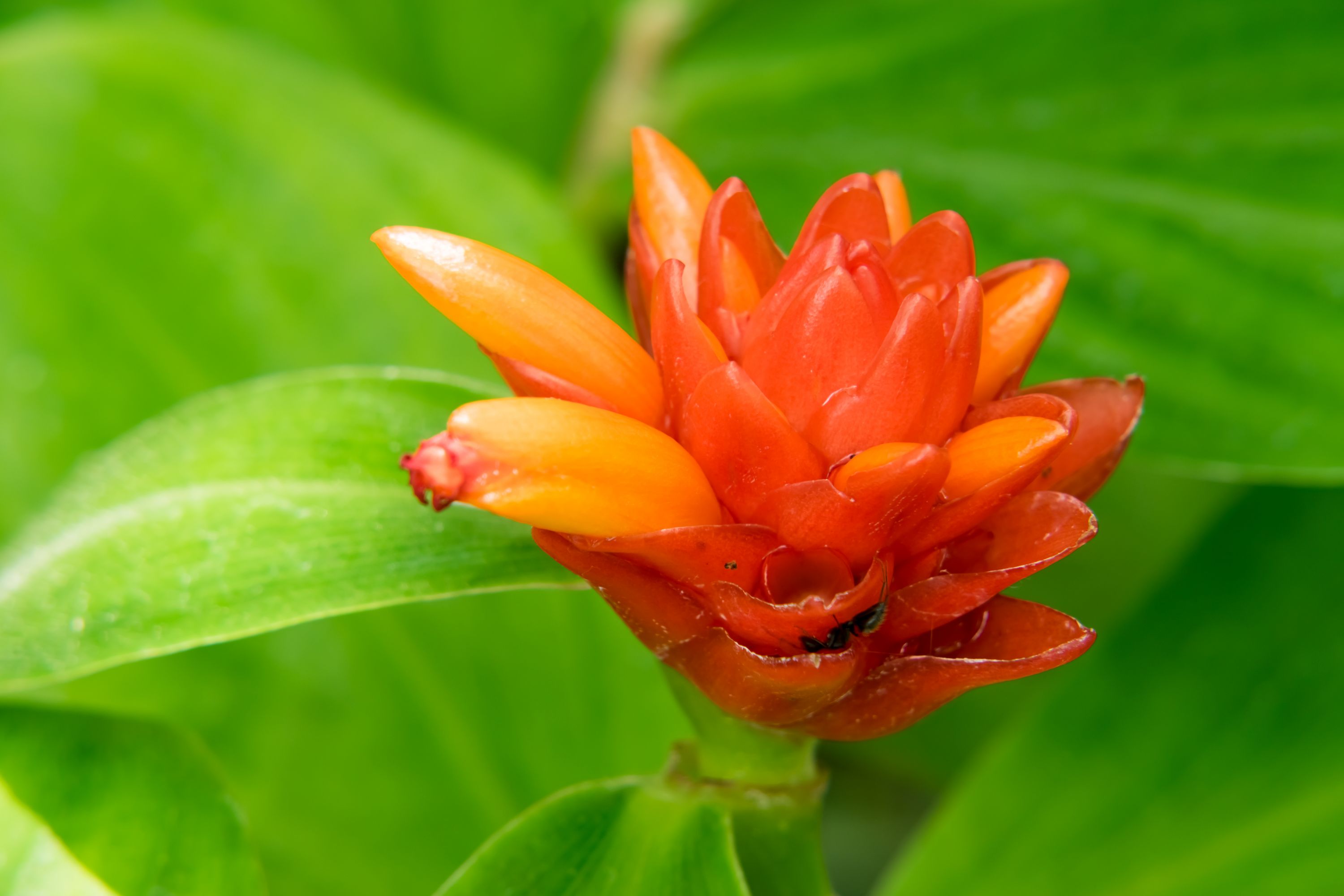Orange Tulip Ginger
(Costus curvibracteatus)

Description
Costus curvibracteatus is a tropical rhizomatous perennial native to Costa Rica and Panama. A member of the spiral ginger family of plants, its common name is orange tulip ginger. It is also sometimes referred to as spiral ginger; however, this common name is better associated with Costus barbatus, a more widely cultivated and very similar species. Despite the name and its relation to the ginger family (Zingiberaceae), the rhizomes of the orange tulip ginger are not edible. The first description of Costus curvibracteatus as a species was published by the Dutch botanist Paul Maas in 1976 in the Acta Botanica Neerlandica. The article, 'Notes on New World Zingiberaceae', described 12 new species in the genus Costus. The following year, Maas published a monograph on the Zingiberaceae, clearing up some taxonomic confusion and expanding descriptions, including that for C. curvibracteatus. In this and other early works, the genus Costus is placed in the family Zingiberaceae, subfamily Costoideae. Following further classification contributions by botanist W. John Kress, the spiral gingers were recognised as a sister clade to the Zingiberaceae and moved to the family Costaceae, as originally suggested by the Japanese botanist Takenoshin Nakai in 1941. An evergreen perennial, the large leaves of C. curvibracteatus can be effective ground cover, ranging in size from 15 to 35 centimetres (5.9 to 13.8 in) long and 5 to 10 cm (2.0 to 3.9 in) wide. They are glossy and glabrous above, but hirsute on the edges and underside, and alternately arranged on a spiralling stem, which has a diameter about 1.5 to 2.5 cm (0.59 to 0.98 in). Coriaceous (leather-like texture) and dark green, the leaves are obovate to elliptic, with a cuneate to rounded base, and the apex is usually acute to acuminate. One of the main features that distinguishes C. barbatus from C. curvibracteatus is the size of the ligule; that of the former is larger, by about 10 to 20 mm (0.39 to 0.79 in). Glossy, overlapping bracts form a terminal inflorescence, that is spike-shaped to ovoid. The bracts are red to orange, usually becoming more orange at the apex, which curves outward. The inflorescence is quite variable in size, ranging from 4 to 18 centimetres (1.6 to 7.1 in) long and 3 to 9 centimetres (1.2 to 3.5 in) cm broad. During flowering, small, hermaphroditic yellow or orange tubular florets emerge among the bracts. They are usually about as long as the bracts but can be substantially longer.
Taxonomic tree:







